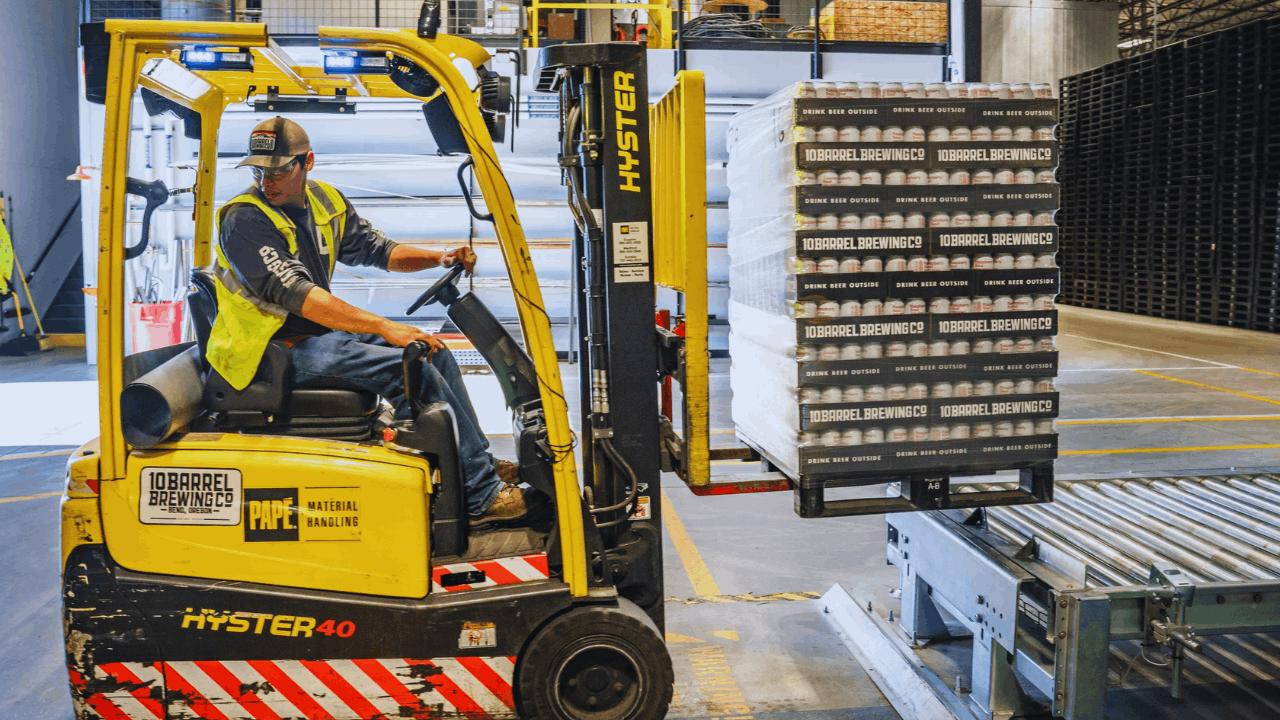Finding reliable, steady work is easier when you understand the role and the hiring process. This guide explains how to apply for jobs as warehouse workers and helps you present your skills with confidence.
You will learn what the job involves, the benefits, and the requirements. You will also see where to search and how to stand out during applications and interviews.
What Does a Warehouse Worker Do?
You need a clear picture of daily tasks before you apply. Warehouse workers receive goods, verify quantities, and store items in the correct locations.

They pick orders, pack securely, and prepare shipments with accurate labels. They also update inventory systems to keep stock counts and locations current.
Core Responsibilities
Your day often starts with checking inbound deliveries against purchase orders. You will scan barcodes, record discrepancies, and move items to assigned bins or racks.
When orders arrive, you pick items by location codes and confirm quantities. You then pack, label, and hand off parcels to outbound carriers on schedule.

Tools, Equipment, and Technology
You may operate pallet jacks, walkie stackers, or forklifts when trained and authorized. Many warehouses rely on warehouse management systems that guide picks and track inventory.
Handheld scanners and mobile apps reduce errors and speed up tasks. You will follow location maps, pick paths, and standardized operating procedures.
Safety and Compliance
Safe lifting, clean aisles, and proper stacking protect you and your team. You will wear protective gear like gloves, safety shoes, and high-visibility vests.
Training covers load limits, equipment checks, and emergency procedures. Reporting hazards quickly keeps the facility compliant and productive.
Benefits of Working as a Warehouse Worker
Understanding the upside helps you choose a path that fits your goals. Warehouse roles can offer stable income, predictable hours, and frequent overtime options.

Many employers provide training that expands your skills and future opportunities. The work environment also builds teamwork and practical problem solving.
Pay, Overtime, and Stability
Warehouses support essential supply chains, which creates consistent staffing needs. Base pay is often supplemented by overtime during peak seasons.
Some facilities offer shift differentials for nights or weekends. Reliable schedules and steady demand can help you plan finances.
Career Growth and Upskilling
You can progress from associate to lead, supervisor, or inventory specialist. Employers may sponsor certifications in forklift operation or first aid.
Cross-training in receiving, picking, and shipping strengthens your profile. Over time, you can move into quality control, logistics coordination, or operations.
Physical Activity and Team Culture
If you enjoy active work, warehouse shifts provide daily movement and variety. Team huddles, clear targets, and shared workflows create a strong group rhythm.
You will learn efficient communication and time management under real deadlines. Achieving daily goals together can be rewarding and motivating.
Why You Should Apply for Warehouse Roles
There are practical reasons to pursue these roles now. E-commerce, retail replenishment, and manufacturing continue to drive hiring.

Skills you develop are transferable across industries and locations. Strong performers often advance quickly when they show reliability and accuracy.
High Demand Across Industries
Retailers, third-party logistics firms, and manufacturers all run distribution facilities. Seasonal peaks create entry points for new workers who want experience.
Many companies convert dependable temporary staff to permanent roles. This broad demand gives you flexibility to choose employers and regions.
Entry-Level Access With Clear Pathways
Most entry roles focus on reliability, safety, and attention to detail. You can learn job-specific systems on the floor with structured training.
Once you master basics, you can request cross-training to expand your scope. These steps build a track record that supports promotions and raises.
Flexibility in Shifts and Locations
Warehouses often run multiple shifts to match delivery windows and carrier pickups. You can target days, evenings, or nights to match your schedule.
Dense logistics areas offer many facilities within commuting distance. This flexibility lets you adjust work around family or school commitments.
Requirements and How to Apply
Meeting baseline qualifications will improve your odds quickly. Most employers require legal work eligibility, a high school diploma or equivalent, and basic math.

You should be able to lift moderate weights safely and follow instructions precisely. A clean attendance record and positive references also matter.
Basic Qualifications and Certifications
You should read location codes, follow safety rules, and use scanners accurately. Forklift roles typically require an employer-approved certification after training.
Background checks and drug screenings are common in many facilities. Clear communication in spoken and written form helps with shift handovers.
Building a Strong Application
Your resume should highlight accuracy, speed, and reliability with simple metrics. You can cite examples like order lines picked per hour or error-free audits.
Mention familiarity with scanners, warehouse software, or basic inventory tasks. Keep formatting clean and emphasize punctuality and safety awareness.
Where to Find Roles and Application Steps
Start on company career pages, major job boards, and local staffing agencies. Read postings carefully and match your resume to listed requirements.
Write a short, focused cover message that shows you meet the key skills. Submit applications promptly and track postings to follow up professionally.
Succeeding in Interviews and Pre-Employment
Expect practical questions about accuracy, pace, and teamwork under deadlines. Be ready to describe how you handled a mistake and corrected it quickly.
Some employers include simple math or attention tests during screening. Arrive on time, bring required documents, and dress in clean, work-appropriate attire.
How to Prepare for Day One
Your first shift sets the tone for future performance. Review safety basics, stretching routines, and hydration habits before you begin.

Ask your supervisor about pick paths, break times, and performance targets. Keep notes on location codes, packing rules, and special handling items.
Mastering Accuracy and Speed
Accuracy protects customers and reduces costly returns. Start slow enough to scan correctly and verify labels before increasing pace.
Break large orders into logical sections to maintain focus. Track your rates and ask for coaching on bottlenecks you notice.
Communicating With Leads and Teammates
Strong communication keeps operations smooth during busy periods. Confirm instructions, repeat key details, and give brief updates on progress.
Report low stock, damaged goods, or misplaced items as soon as you see them. Thank teammates who help you finish priority picks on time.
Staying Safe and Reducing Fatigue
Use proper lifting techniques and request help for heavy or awkward loads. Wear comfortable, supportive footwear to protect joints during long shifts.
Rotate tasks when possible to reduce repetitive strain and maintain attention. Take scheduled breaks and refuel to keep your pace steady.
Advancing Your Warehouse Career
A simple plan can speed your advancement in logistics. Track achievements, ask for added responsibilities, and learn new systems.

Volunteer for cycle counts, cross-dock tasks, or returns processing to broaden skills. Share ideas that reduce errors or save steps on common workflows.
Building Credibility With Results
Managers value measurable improvements that support service levels. Keep a log of weekly rates, error reductions, and attendance milestones.
Offer to mentor new hires after you stabilize your own performance. Document small process fixes that your team adopts consistently.
Training and Certifications to Consider
Short courses in inventory control or shipping documentation add value. First aid, equipment safety, and hazard communication training improve readiness.
Over time, explore certificates in logistics or supply chain fundamentals. These credentials signal commitment and help in internal promotions.
When to Seek New Opportunities
If growth slows, review internal postings and talk with your manager respectfully. Ask for a development plan with clear targets and checkpoints.
If options remain limited, apply at larger facilities that offer more tiers. Carry references and performance evidence to support your move.
Conclusion
You now understand the role, the benefits, and the path to getting hired. Use this clarity to decide where to apply and how to present your strengths effectively.
Keep your introduction and resume focused, show reliability, and prepare for simple, practical interviews. Start today by identifying three nearby facilities and move forward with purpose toward a stable warehouse career.